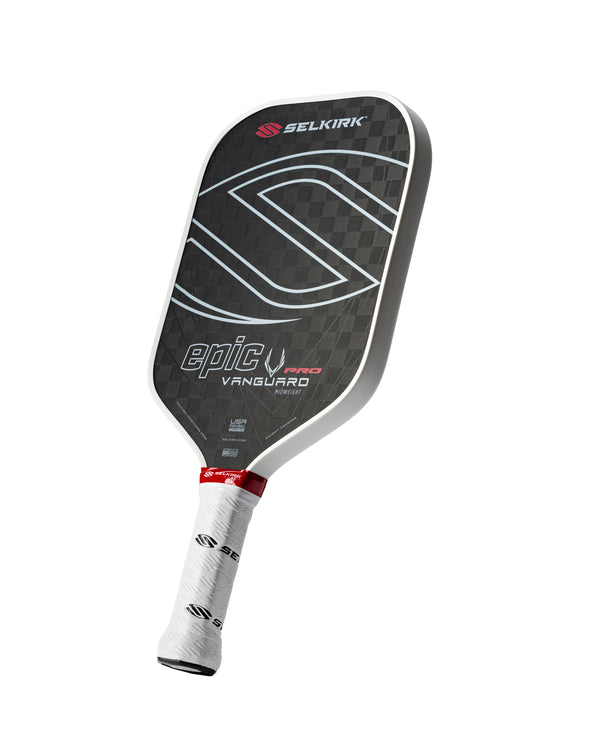
Sometimes, all does not go to plan and we find ourselves in a point going in the direction not favoring us to win. There are literally hundreds of ways a point can go that ends up leading to the moment where you think to yourself, uh oh. In fact, I regularly experience hearing, or saying myself, a comment out loud that marks the moment where a mistake is made and there is a realization on the court that there is an obvious opportunity for one side to go on the attack. Whether or not there is an audible cue, the fun of the game is the momentum shifts. Let’s evaluate three keys to regaining control after losing it.
Retreat
It should be emphasized that from a strategic perspective, we never want to willingly give up territory. In a dinking battle, it is an exercise in patience and you always want to try and avoid allowing that extra bounce at the non-volley zone that results in you slowly, and unwittingly, drifting backward. That drift represents more real estate and opportunity for your opponent. Avoid the drift at all costs, but what happens when your opponent hits a great shot and you cannot hit it well without retreating? Is that okay?
While we don’t want to retreat, sometimes we must, and it is a perfectly acceptable strategy. If, for example, you pop a ball straight up, a step or two backward will buy you a little more reaction time, should you need it. Other times your opponent will hit the amazing lob or take an angle that has you naturally retreating just to hit the shot. This too is obviously acceptable, but with both types of retreats it is important to consider what your partner is doing. We should be retreating together when playing doubles. Leaving one up and one back is simply put, target practice. We want to move in unison to parry the momentary feeling of pandemonium that is starting to unleash itself on the court. This leads to the next key to resetting.
Don’t Panic
Sports involve both the raw athletic ability of a player, in addition to the mental readiness to respond to whatever circumstances the athlete faces. It is a bad feeling when you have had to retreat and then comes the barrage. Your opponent is licking their chops to pound you with smash after smash. Your mind begins to go wild. What angle will they take? How fast will they hit it? Are they going to try and slow play a dink that I will need to chase? The most important key at this point is to calm the mind. Do not panic.
Just because your opponent seemingly has control of the situation, and they do, it is not as easy as it seems. We’ve all been at the net smashing away and there is a lot going on in their minds as well. When you retreat, they might not have the best angles of attack and now you will find yourself in a situation where the ball might be coming at warp speed, but it will be coming to you in a returnable position. Let your mind slow. The tendency is to panic and rush the swing. Your mechanics break down and then the ball ends up in the net. Be calm. Expect to watch the ball into the paddle and use normal paddle and non-paddle hand weight transfer to hit a return. Sometimes the best you can do is a normal return over the net, but what you’re shooting for is the all-important drop.
Drop to Reset
After losing control, we must try and regain control of the net. How do we do it? We could go for the lob, but simple statistics tell us the probability of a successful lob shot in this scenario is a poor choice. It is going to fail far more often than it will work; albeit, enjoyable when it hits. Lobs from the baseline are pickleball’s equivalent to the lottery. We could drive it, but again, the odds are not in our favor. Our opponents are both at the net with a lot of time to react given our position. This leaves the best option as the reset.
A reset is nothing more that a third shot drop performed at a time when you find yourself not in control of the point. To be frank, the usefulness of this reset can occur anytime you find yourself with the control slipping away. A reset shot does not need to wait until you are at the baseline fighting for your proverbial pickleball lives. That said, the best course of action when you are fighting for your life is to reset by dropping it into the non-volley zone, allowing you and your partner to make your way back to the net. It might take multiple drops in a row to make your way all the way to the net, depending on your placement on the court. The key is to remain patient and work your way to the net. Two drops will probably do the trick, and once back at the net you now have an opportunity to take control of the point yourself.
Conclusion
Successful resets are one of the best feelings in pickleball. Even if you don’t end up winning the point, it puts your opponent on notice that you are not going to go down, on any point, easily. When you regain control and win one of these points, it can shift the momentum of a game or even match. Use these three keys whenever you find yourself needing to regain control of a point that has come partially or totally, off the rails.
Written By: Christopher Amidzich





















